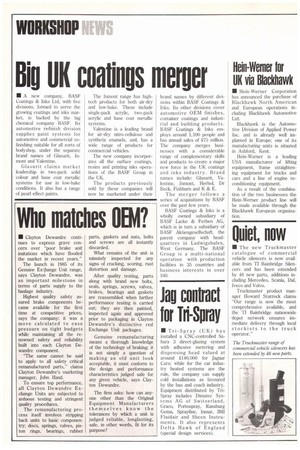Who matches OEM?
Page 52

If you've noticed an error in this article please click here to report it so we can fix it.
• Clayton Dewandre continues to express grave con cern over "poor brake unit imitations which have flooded the market in recent years."
The launch in 1985 of its Genuine Exepange Unit range, says Clayton Dewandre, was an important milestone in terms of parts supply to the haulage industry.
Highest quality safety assured brake components be came available for the first time at competitive prices, says the company; it was a move calculated to ease pressure on tight budgets while maintaining all the re nowned safety and reliability built into each Clayton Dewandre component.
"The same cannot be said to apply to all safety critical remanufactured parts," claims Clayton Dewandre's marketing manager, John Hand.
To ensure top performance, all Clayton Dewandre Ex change Units are subjected to arduous testing and stringent quality procedures.
The remanufacturing process itself involves stripping hack units to basic componentry; discs, springs, valves, piston rings, bearings, rubber parts, gaskets and nuts, bolts and screws are all instantly discarded.
What remains of the unit is minutely inspected for any signs of cracking, scoring, rust distortion and damage.
After quality testing, parts along with brand new bolts, seals, springs, screws, valves, brakes, bearings and gaskets are reassembled when further performance testing is carried out; they are then painted, inspected again and approved prior to packaging in Clayton Dewandre's distinctive red Exchange Unit packages.
Genuine remanufacturing means a thorough knowledge of the technology of braking; it is not simply a question of making an old unit look acceptable, it must conform to the design and performance characteristics judged safe for any given vehicle, says Clayton Dewandre.
The firm asks: how can anyone other than the Original Equipment Manufacturers themselves know the tolerances by which a unit is judged reliable, longlastirig, safe, in other words, fit for its purpose?




















































































